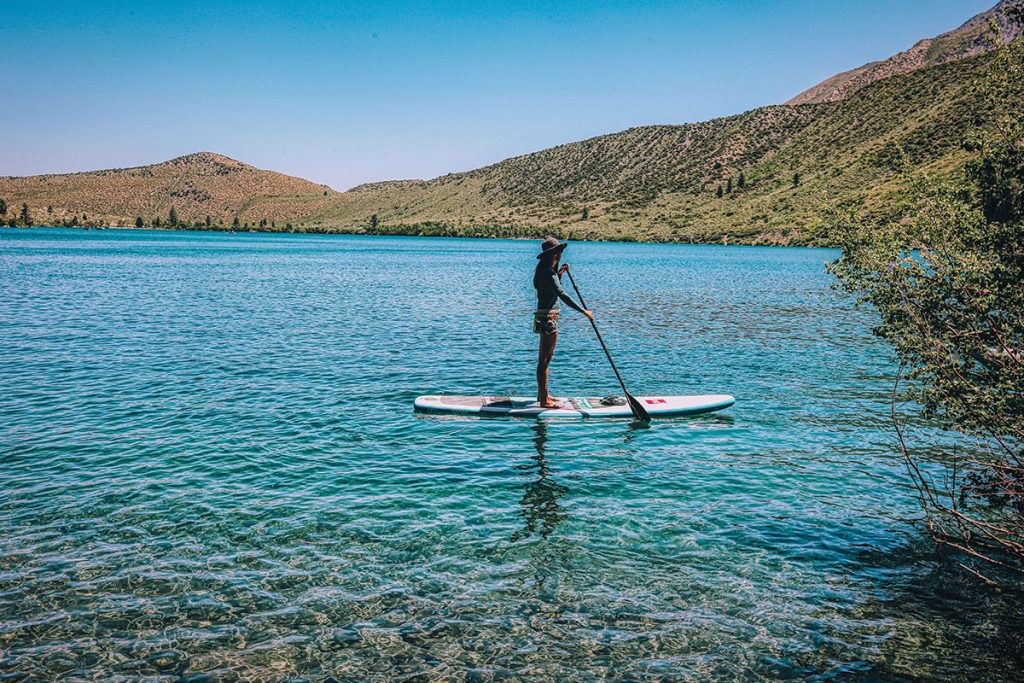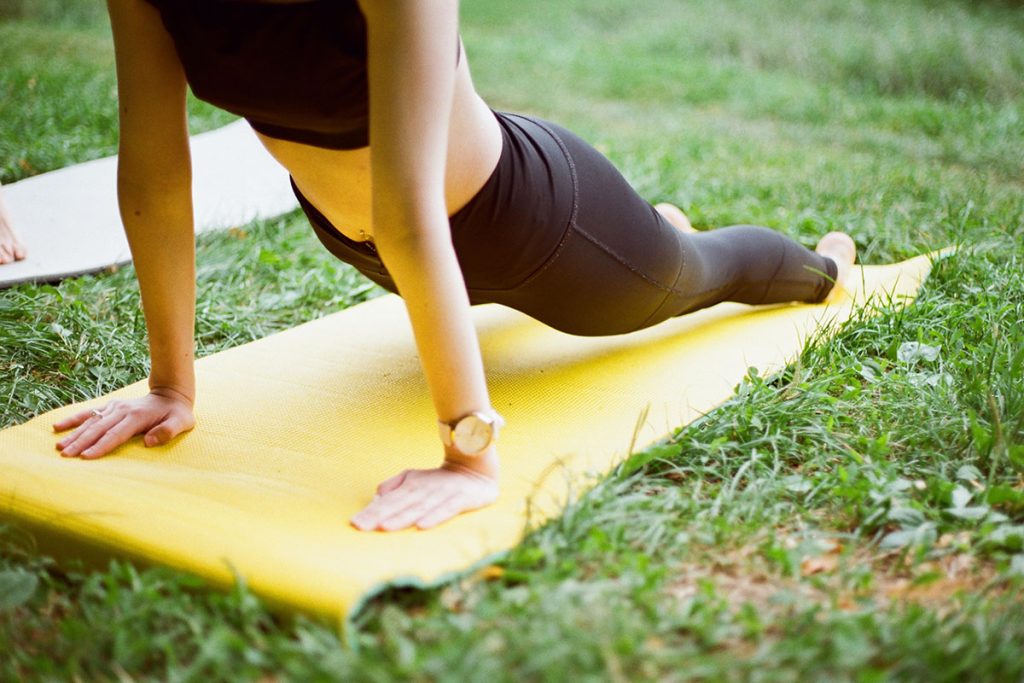- 1. Importance of Staying Active
- 2. How and Where to Train on the Road
- 3. Warm-up Routine
- 3.1. Workout #1
- 3.2. Workout #2
- 3.3. Workout #3
- 4. Exercises for the Kids or the Kid in You
- 4.1. Bear Crawl
- 4.2. Jaguar Crawl
- 4.3. Crab Walk
- 5. Hiking While Overlanding
- 6. Tips for Hiking While Overlanding
- 6.1. Pick the Perfect Spot
- 6.2. Gear Up
- 6.3. Plan While Driving
- 7. Alternatives to Outdoor Training
- 7.1. Gym Membership
- 7.2. Hotel Stay
- 8. Tips for Staying Healthy While Overlanding
- 9. Just Keep Moving

Staying Active When Overlanding: Best Outdoor Workout Ideas
Table of Contents [Show]
Overlanding adventures are an incredible way to explore new places. The beautiful landscapes and tranquil settings allow you to relax and be one with nature. Trading the office cubicle for a moving vehicle is an adventurer's dream. While the scenery is much better, sitting in a vehicle for long periods of time is just as detrimental as sitting in an office chair all day. Staying active while overlanding is an important part of the journey, and keeping healthy and fit enables you to enjoy your time on the road more.

Importance of Staying Active
Staying active is incredibly important for both your mental and physical well-being. Being physically active will improve long-term brain health, assist in managing weight, increase your daily energy, improve blood flow, reduce the risk of diseases, strengthen bones and muscles, and offer a sense of self-improvement. Moving your body, especially in nature, not only benefits your physical body but also does wonders for your mental state. Staying active clears your mind and releases stagnant energy that’s impeding your focus.
How and Where to Train on the Road
How and where to train all depends on your destinations as an Overlanding traveler. You don’t need a lot of gear to stay fit on the go, and you can keep your workouts simple Wide open and flat areas provide great options for running or biking. Mountainous terrain is excellent for steep hikes or mountain biking through rigorous tracks. Travel near the water for opportunities to swim, kayak or paddle boarding. Climb rocks or lift logs in dense forests to get creative with your workouts.

Wherever you go, use your surroundings to your fitness advantage. Here are some great ideas that work anywhere:
Warm-up Routine
Before any workout or strenuous hike, it’s important to warm up to decrease the risk of injuries. Do at least three of these warm-up exercises before every workout session.
- Arm circles, both directions
- Ankle circles, both directions
- 20 - 30 jumping jacks
- A light jog, either in place or moving
- Leg swings
- Head rolls, both directions
- Hip circles
- Wrist rolls (especially important before doing push ups)
Workout #1
- 20 high-knees
- 20 squats
- 20 butt kicks
- 20 walking lunges
- 30 second plank
- 15 push-ups
Rest for 2-3 minutes and repeat two more times for a total of three rounds. Hold a rock or log below your chest for weighted squats. Use a bench of log for incline push-ups.
Workout #2
- 50 jumping jacks
- 10 push-ups
- 10 chaturanga push-ups (keep elbows close to your body)
- 5 diamond push-ups
Rest for 2-3 minutes and repeat two more times for a total of three rounds.
Workout #3
- 10 tricep dips (use an elevated surface like a bench, log or car bumper)
- 10 elevated push-ups (use a log, rock, or bench)
- 10 plank walk-ups (start in full plank, then go to elbows, and back again)
- 25 leg raises
- 25 crunch twists or bicycles (hands to back of the head and bring elbows to opposite knees)
- 20 scissors
Rest for 2-3 minutes and repeat two more times for a total of three rounds.
Use these workouts however you see fit. The numbers are simply suggestions; listen to your body and adjust accordingly. Do one workout a day, or combine all three in one day for an intense one-hour training session. Always stretch for at least 10 - 15 minutes after your workout to help reduce the risk of injury.

Exercises for the Kids or the Kid in You
While out in nature, why not connect with your inner animal while you work out. Add these exercises into the routines above, or have fun practicing them with your kids. Throw in fun animal noises while you’re at it!
Bear Crawl
With your hands and knees on the ground, lift your butt in the air while keeping just your hands and toes in touch with the ground. Keep your core engaged and back straight. Move forward in a crawling movement for as long as you can without touching your knees to the ground. Over time, move backward and sideways for added difficulty.
Jaguar Crawl
With your hands and knees on the ground, start in a low crawling motion with your right knee moving towards your right elbow, then your left knee toward your left elbow. Keep moving forward as long as you can, keeping your core engaged the entire time. The main difference between the jaguar and bear crawl is your hips stay much lower, and your stride is longer.
Crab Walk
Sit on the ground with your feet out in front of you and your palms on the floor behind you. Use your arms to lift your hips up in the air with the front of your body facing upwards. Start moving, or shuffling, like a crab.

Hiking While Overlanding
Hiking is by far one of the best and most convenient ways to stay fit while overlanding. It gives you a chance to stop, immerse yourself in nature, take in some extraordinary views and get your body moving. Other great benefits to hiking while overlanding include:
- It’s a great warm-up, or cool down, for a workout session.
- It can clear mental fog, helping you get ready for longer drives.
- Hiking after a meal gives you energy and time to properly digest your food.
- It can be any level you choose - from a strenuous climb to a peaceful walk - as long as you’re moving.
Tips for Hiking While Overlanding
Pick the Perfect Spot
There are many areas around the country where you can situate yourself near a trailhead, set up camp for a bit and get your hike on. You can also pull over, and stretch your legs for an hour or so. If you decide to camp, plan ahead when possible and reserve a campsite.
Gear Up
If you plan to hike while overlanding, make sure you bring appropriate gear. Consider packing bear spray, appropriate safety gear, emergency kits and plenty of drinking water.
Plan While Driving
Put your passenger or “navigator” to work by having them research and map out camping locations and the perfect hiking trail while you drive. This lets you be more efficient and allows for more time on the trail.
Alternatives to Outdoor Training
Overlanding makes it easy to hike, run and do outdoor workouts, but sometimes the weather doesn’t cooperate or you're in need of a different type of workout. Think about these training ideas while on the road:
Gym Membership
Many workout facilities, such as Anytime Fitness, Planet Fitness, and the YMCA, offer memberships that can be used almost anywhere in the country. These are great options, not only for a great workout but also for a warm shower.
Hotel Stay
Breaking up your routine with an occasional hotel stay can help rejuvenate your spirit. Choose a hotel with a fitness center and/or pool, and get in a good workout with your stay.

Tips for Staying Healthy While Overlanding
Spending time inside your vehicle is a big part of the overlanding experience. Making a commitment to work out regularly while overlanding will improve your health, increase your energy, and make you feel happier! If you're driving for long stretches at a time without the chance to get in a good workout, keep these tips in mind:
- Stop Regularly. Pull over, and stretch your legs. Get out and do a few jumping jacks or squats. Walk around the vehicle. Just move.
- Eat Healthy. It’s tempting to snack while sitting idle in your vehicle. Purposely stock up on healthy, portable food like fruit, veggies, granola, baked crackers, chips, and protein bars.
- Drink Water. It’s always important to drink lots of water, but when you’re sitting in a car all day it’s easy to forget. Make sure to stay hydrated, especially when you exercise or hike.
- Get Sleep. Lack of sleep makes it hard to concentrate, which is not a good thing while driving. Plus, sleep rejuvenates and gives you energy.
- Get Sun. But not too much (see below)! Vitamin D, in the form of sunshine, is essential for bone growth and development. Vitamin D improves resistance to certain diseases and boosts your mood.
- Protect Yourself from the Elements. When training outdoors you’ll be exposed to hot sun, harsh wind, and rain. Protect yourself by applying sunscreen and wearing proper attire. The Sun Dagger™ hat provides both UV protection and cooling ventilation, making it perfect for all activities. The AIRKÜHL™ hoody is a lightweight, ultra soft hoodie with superior moisture management, breathability, and maximum UPF 50+ sun protection. The RENEGADE™ shorts not only offer sun protection but complete comfort.
Just Keep Moving
Being active requires dedication and focus, especially when on the road. If you aren’t on planned hikes, take at least 30 minutes a day, and three days out of the week to focus on some form of physical activity. Always remember to stay hydrated, rest and stretch when you’ve finished training. As your vehicle moves from place to place on your overland adventure, don't forget to get out and move your body!
Featured image by: Alvaro Palacios.


